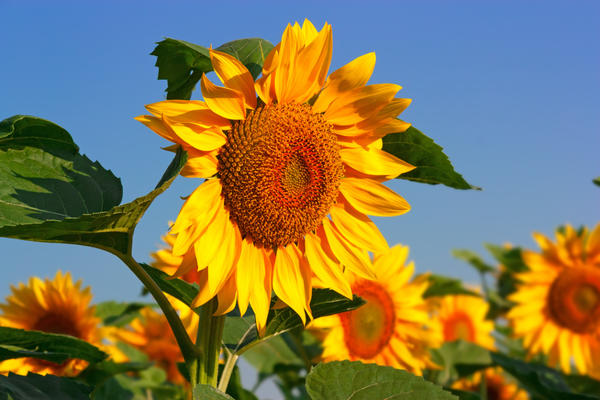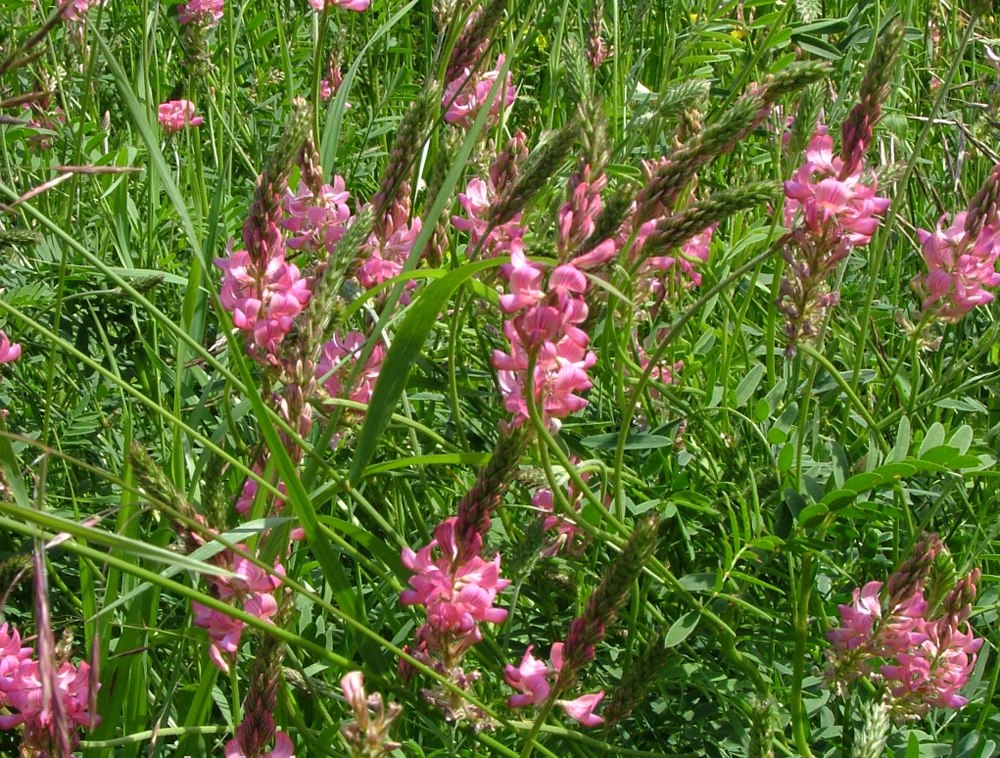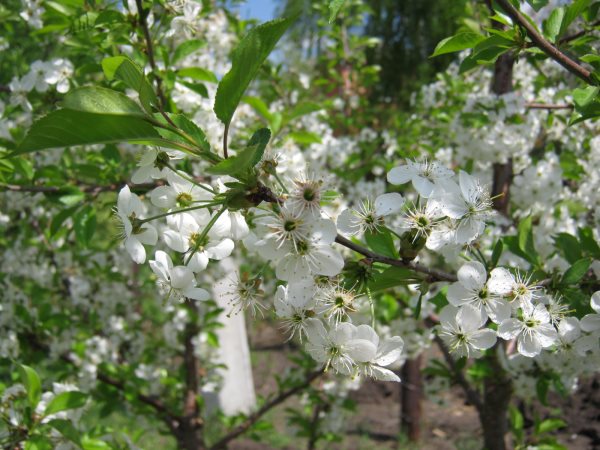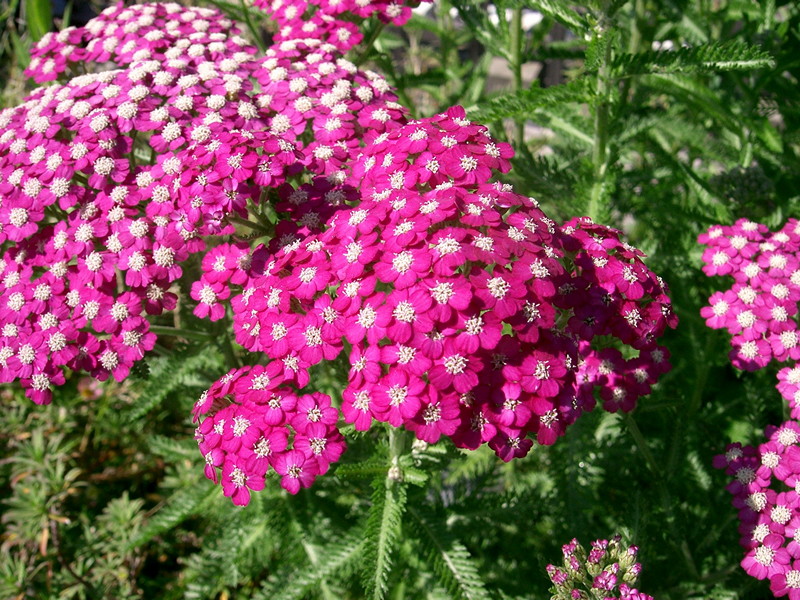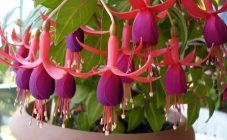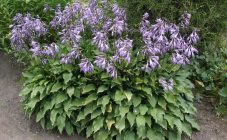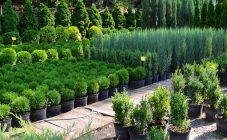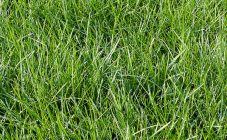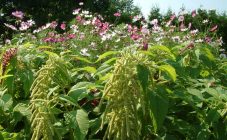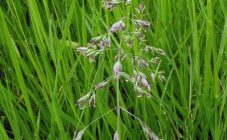Content:
It is known that bees are bred for the purpose of obtaining honey. Not all beekeepers understand that honey yield can also be influenced. Honey plants sown specifically for bees exist for this purpose and can be used without restriction. You should figure out what honey plants are, what varieties exist, and which ones are best used to increase yields.
Honey plants for bees
Honey plants are a type of plant that grows and, in the process of flower development, forms pollen and nectar in it. That is why they are interesting to bees. Any such bush growing within 2-3 km will be used by insects for processing. Moreover, it can be a garden version of a cultivated plant or wild varieties.
These plants influence the amount of processed products, helping to solve the problem of large apiaries, where insects do not have enough food. Additionally, honey plants for bees help to avoid hunger strikes of striped workers, which is dangerous for them.
Honey plants can share:
- By flowering time:
- Spring;
- Summer;
- Autumn.
- By life expectancy:
- Annuals - the entire development process lasts only a year (sunflower, buckwheat, phacelia);
- Biennials - sweet clover;
- Perennials - sainfoin, clover, alfalfa.
Sunflower
Today, more than 50 types of sunflowers are known, which are annual honey plants. Sunflower is used in agriculture to produce seeds that are later processed into oil. The culture can be sown in any sunny area, because it is quite thermophilic. She is noted to be resistant to dry weather. Grows well in loamy and sandy soils. The sunflower is popular as a honey plant, since pollination by bees is necessary for its fruiting. It is on them that the yield of the plant depends.
The plant begins to bloom no earlier than 55 days after the day of sowing. Around mid-July, full bloom appears, first of all, distant flowers bloom. The honey content of a sunflower is determined by the location of the basket. With sufficient pollination, the plant blooms for a maximum of 38 hours. In its absence, the process can be delayed for at least a week.
Sainfoin
A perennial plant belonging to the legume family is sainfoin, which in home cultivation is often called hare peas, burkun or honey grass. Mostly grown in Europe. It is no less popular in the southern region of Russia and in Siberia. Most often, this grass grows near rivers and in forest thickets. To grow the plant as a crop for forage purposes, it is planted in the fields.
Like many plants of Siberian melliferous plants, burkun produces flowers for the first time only in the second year after sowing. At the same time, flowering begins in early May and continues until early July. While the bees use spring perennial honey plants, their replacement ripens - summer plants. Sainfoin bloom begins with one flower, which provokes the gradual opening of the rest. One bud lives no more than 24 hours.So, the entire bunch with flowering can dry out in a week.
The most productive period for bees is considered to be a temperature above 24 degrees, because under such conditions the grass produces the most nectar. Flower juice is colorless and rich in sugars. The culture is considered finicky. In hot climates, the plant requires abundant moisture, on which honey productivity depends.
When growing a crop, you should take care of the irrigation system. In general, burkun is considered one of the best plants, capable of bearing up to 350 kg of nectar per hectare.
Soy
The cultivated soybean plant was originally planted as a source of nectar and pollen for bees. At the same time, the melliferousness of the culture is very minimal. Most often, soybean flowers are a late feeding for bees and provide winter supplies. Such a honey plant is capable of producing no more than 25 kg of nectar per hectare. The resulting products from processed nectar are not pumped out by beekeepers, they are simply left to the bees for winter survival. In addition, insects fly around soybean fields to a greater extent.
Siderata
Annual or perennial crops, which are often grown on land that have not been planted temporarily, are called siderates. Gardeners consider them a green organic fertilizer. Such honey plants are sown both in autumn and spring. Siderata honey plants are grown for the following purpose:
- improving soil quality;
- saturation of the earth with useful elements;
- fight against fungal diseases and pests;
- inhibition of weed development;
- attracting striped insects;
- improving the structure of the finished compost mass and accelerating the composting of the green part in compost heaps.
Most often, green manures have a fast growing season. These include:
- legumes - peas, alfalfa, sweet clover, clover;
- cabbage - white mustard, oil radish;
- hydrophiles - phacelia;
- cereals - rye, barley, oats.
Rusyanka
Dagil forest, may be called the forest angelica, is considered the leader among honey plants. The plant is also known as rusyanka. It belongs to the perennials of the umbrella family. It grows preferably in wet or dry soil in clearings, taiga glades and transitional forest belts. The plant has flowers of honey plants, which are distinguished by a strong honey aroma, transmitted by honey products.
The flowering period falls during the active honey harvest (mid-July) and lasts until early August. The forest belts where the duckweed grows are especially appreciated by beekeepers, since during the period of its flowering it is possible to collect at least 200 kilograms of nectar from one hectare. The plant is most widely used as fodder for livestock.
The best autumn honey plants
For the beekeeping industry, honey plants are considered to be of particular importance, thanks to which it develops. Fructose and glucose are considered constant components of nectar. Their ratio in the nectar of different plants can vary. Nevertheless, all products harvested from such plants have a useful rich composition. The healing properties of nectar are transferred to bees, respectively, to honey products.
Autumn honey plants of the middle lane share:
- focusing on the nature of the bribe;
- based on location;
- by climatic region.
By the nature of the bribe, trees can be divided into several groups:
- Pollen-producing crops. Their flowering is almost imperceptible to the human eye, but at the same time it is appreciated by bees:
- pine;
- nut;
- pikhva;
- poplar;
- Birch tree;
- oak;
- cedar;
- ate.
- Mixed trees from which bees can collect both pollen and nectar. Beekeepers mark them as the best honey plants:
- Willow;
- Linden;
- Acacia.
- Plants that exclusively produce nectar are some species of willow.
According to the place of growth, trees are divided:
- Garden culture - cherry, quince, pear, sweet cherry, apple tree;
- Forest - coniferous crops, willow, alder, maple, viburnum, oak, aspen;
- Park varieties - poplar, linden, chestnut, acacia, hawthorn.
Perennial honey plants for bees are also divided, depending on the climatic zone:
- Mountainous parts of Asia and Altai - willow, acacia;
- the Far East - willow, maple, linden;
- Taiga and Northern parts - willow;
- Southeast part - willow, acacia, chestnut, maple;
- Steppes of Asia - willow, yellow acacia;
- Forest-steppe - willow, maple, linden.
For high-quality growing of bees and timely harvesting, you need to know exactly the period in which the main bribe will come. It is impossible to determine the exact date when this or that tree will bloom. But every year all honey trees start flowering in the same sequence. Also, the intervals between flowering remain unchanged.
This can be combined into a small calendar table. All data in it are approximate, for orientation.
Flowering calendar of various trees
| Plant names | Period | Flowering duration, days |
|---|---|---|
| hazel | April 22 | 6 |
| willow-bredina | 28 april | 10 |
| Norway maple | May 15 | 10 |
| willow willow | 16th of May | 10 |
| yellow acacia | May 25 | 13 |
| clover white | June 16 | 22 |
| Linden | July 8 | 14 |
Flowers honey plants
For many gardeners, bees are annoying pests. But at the same time, few take into account the fact that without them many fruit and vegetable crops, garden flowers and other plants that need pollination will not develop. Therefore, not only is it necessary for the bees to come to visit, but it is also important to lure them to yourself. To attract the attention of striped workers, you need to acquire plants that interest them. Bees can attract:
- Native flowers - most often they are considered by gardeners as weeds. Most of the bees are not indifferent to them, they show the way to the garden;
- Bright buds - Colorful color makes pollinators take notice. Plants of yellow, white, blue-violet color are considered the most interesting;
- Floral scent;
- Bloom length - such plants give hope for a large amount of continuous food intake;
- Early varieties of flowers - help bees to replenish the food supply, which was so lacking in winter;
- Gardens with mixed vegetation - bees like a wide variety of honey plants.
Honey garden flowers that are planted specifically for feeding bees include:
- Lavender is a fragrant herb with average popularity around the world. It begins to release color in late spring, this period lasts until early summer;
- Ornamental Sunflower - A large hat with colorful petals aids in harvesting. Not picky about the content, which makes it possible to grow it in any garden;
- Echinacea is a perennial plant that was brought from the eastern United States. Flowering occurs from mid-summer and lasts almost until frost;
- Roses - insects love not all of their species. Open buds with a pleasant sweet floral scent are considered the best for feeding;
- Snowdrops are one of the first plants to bloom at the end of winter. Suitable for replenishing stocks that have almost run out during the winter;
- Geranium is a picky, hardy flower that blooms from early spring, ends with the first frost, making it the leader among the bee garden;
- Crocus - the bloom resembles the shape of a light bulb, which is especially attractive to bees.
Plant honey productivity
For a better understanding of what you should acquire for the successful development of an apiary, you should study the yield. The honey productivity of plants is united by a table showing data per hectare. It should be noted that the figures are average, taking into account the best weather conditions.
Honey productivity of garden plants
| Honey plant | Productivity, kg |
|---|---|
| White acacia | 350 |
| Yellow acacia | 75 |
| Cherry plum | 35 |
| Fodder beans | 6 |
| Cornflower meadow | 194 |
| Cornflower rough | 280 |
| Common heather | 200 |
| Garden cherry | 45 |
| Marsh geranium | 31 |
| Meadow geranium | 192 |
| Mouse peas | 69 |
| Mustard white | 100 |
| Sowing buckwheat | 105 |
| Biennial white sweet clover | 200 |
| Angelica forest | 116 |
| White willow | 79 |
| Norway willow | 10 |
| Cabbage | 70 |
| Clover white | 100 |
| Norway maple | 200 |
| Small-leaved linden | 700 |
| Sowing alfalfa | 170 |
| Rusyanka | 270 |
| Phacelia tansy | 290 |
| Cherries | 38 |
| Sainfoin | 172 |
Plants from which honey is collected
Stripes are attracted by the sweet smell and bright color of the plants. The varieties that produce nectar and pollen are considered to be honey plants. These include:
- Garden bushes;
- Shrubs;
- Trees;
- Herbaceous plants.
Early honey plants help bees to survive after winter, when food reserves are already running out. For this purpose, tree sap, buds and leaves are suitable, from which propolis is obtained during the processing. In nature, everything is built in such a way that not only plants are needed by bees, but also vice versa. After all, most of the plants will not be able to develop normally without a pollinator.
